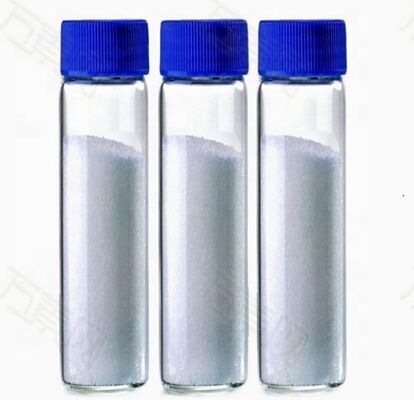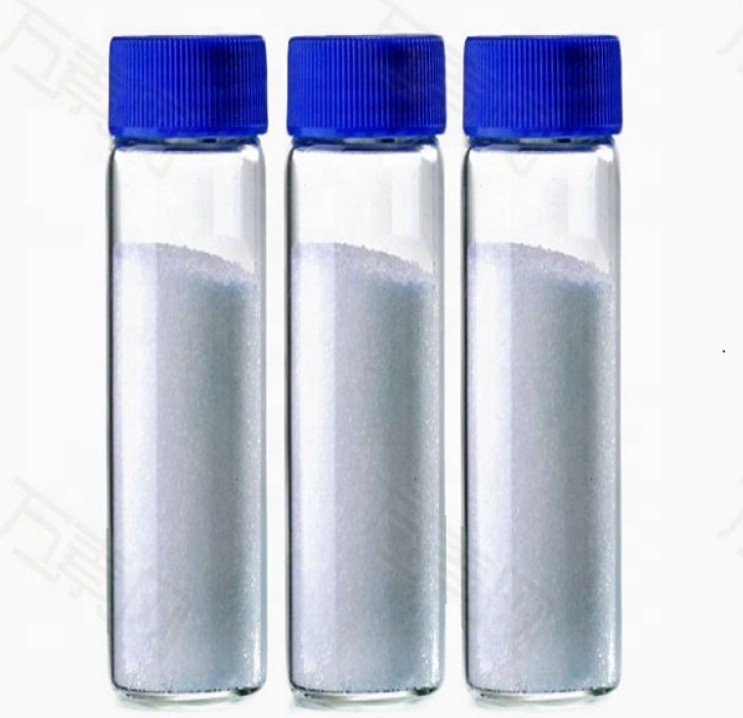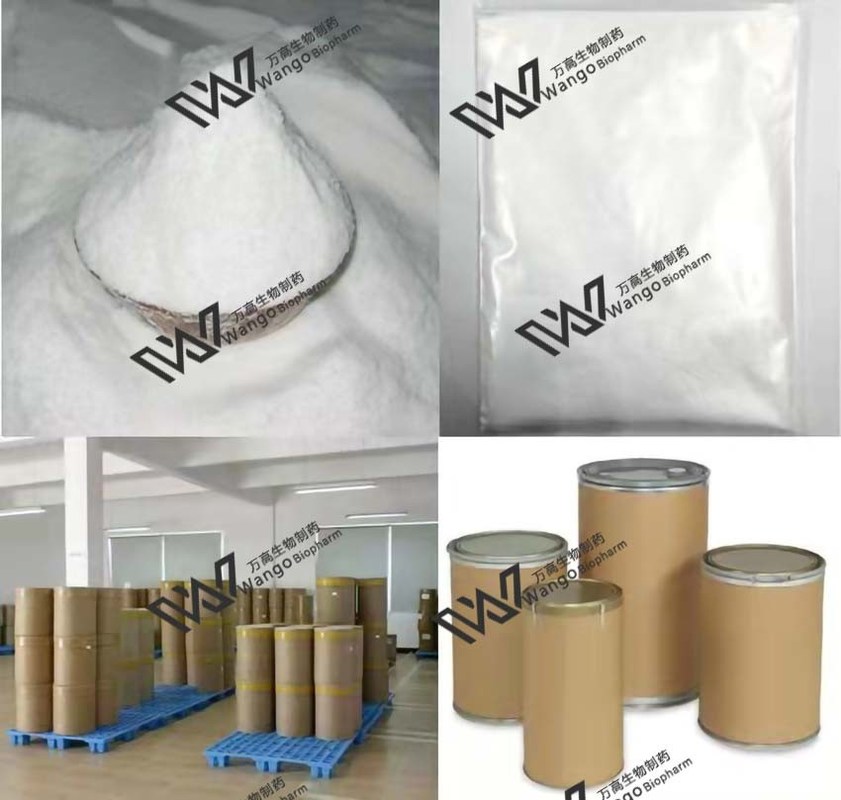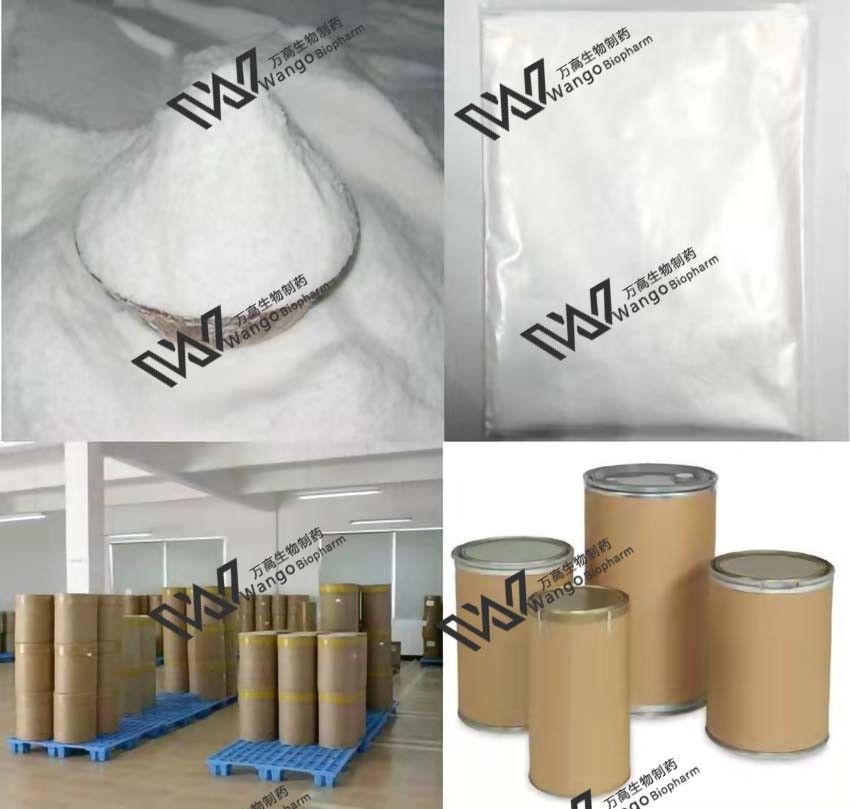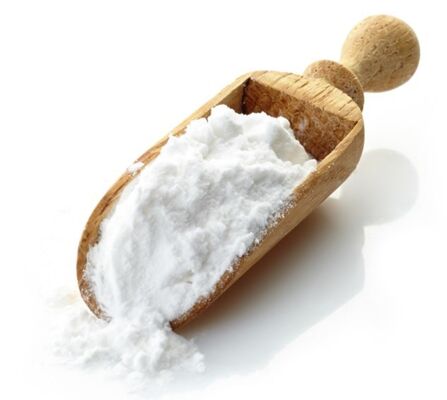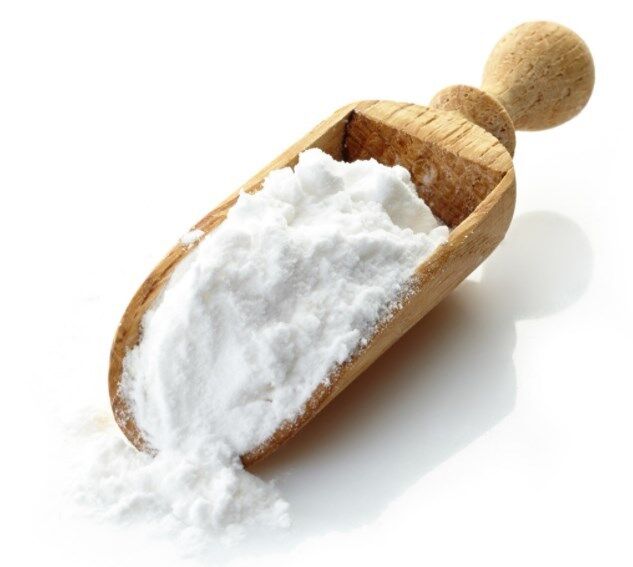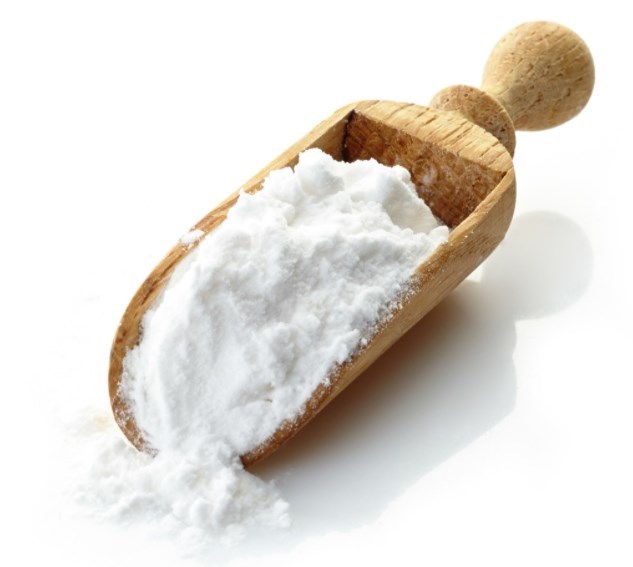Produkt-Beschreibung
methylammonium iodide Basic information Specifications Applications Product Name: methylammonium iodide Synonyms: MAI;LT-S9126;methylammonium iodide;Methylamine·hydriodic acid;CH3NH3I (MAI);MethylazaniuM;Methanamine hydriodide;Methylamine Hydroiodide CAS: 14965-49-2 MF: CH6IN MW: 158.96951 EINECS: 239-037-4 Product Categories: OLED Mol File: 14965-49-2.mol methylammonium iodide Chemical Properties Melting point 270-280°C Fp 12℃ storage temp. Hygroscopic, Refrigerator, under inert atmosphere solubility Methanol (Slightly), Water form powder color White to Off-White InChI InChI=1S/CH5N.HI/c1-2;/h2H2,1H3;1H InChIKey LLWRXQXPJMPHLR-UHFFFAOYSA-N SMILES [NH3+]C.[I-] Safety Information Hazard Codes Xn Risk Statements 22-36/37/38 Safety Statements 26-36/37/39-46-24/25 RIDADR UN1219 - class 3 - PG 2 - Isopropanol WGK Germany 3 HS Code 29211100 MSDS Information methylammonium iodide Usage And Synthesis Specifications Chemical formula CH6IN Synonyms Methylamine hydroiodide CAS No. 14965-49-2 Chemical name Methylammonium iodide Physical appearance White, crystalline solid Purification method Recrystallisation (ethanol) Purity >99.9% (as measured by elemental analysis) Molecular weight 158.97 g/mol Recommended solvents for perovskite synthesis DMF, DMSO Applications Methylammonium iodide (MAI), also referred to as methylamine hydroiodide, is a precursor for the synthesis of organic-inorganic hybrid perovskites for use in FETs, LEDs and PVs. Due to the high purity of the methylammonium iodide (99.99%), it should be noted that its solubility is reduced within dimethyl formamide and dimethyl sulfoxide. This reduced solubility is due to the removal of trace amounts of residual hydroiodic acid (HI) used during the synthesis and purification of the material. This can potentially have an impact upon the performance of solar cells leading to a reduction in maximum power conversion efficiency achievable. Adding fixed concentrations of hydroiodic acid to perovskite solutions can allow for the improvement of device metrics. Using high-purity precursor materials allows for accurate addition of amounts of hydroiodic acid giving higher reproducibility to experiments. It is recommended that between 1% and 10% hydroiodic acid is used with high-purity methylammonium iodide to achieve optimal device performance. The amount required depends on the precursors used, solution concentration, solvent used, and processing environment. Therefore, this will need to be adjusted for each individual laboratory and process. Application For simpler ink fabrication, it is recommended that the lower-purity methylammonium iodide (>98%) is used. Description Methylammonium iodide (MAI), also referred to as methylamine hydroiodide,?is a precursor for the synthesis of organic-inorganic hybrid perovskites for use in FETs, LEDs and PVs. Uses Methylammonium iodide can be used as a precursor in combination with lead iodide to change the morphology of the resulting perovskite materials. Perovskite materials can further be utilized in the fabrication of alternative energy devices such as light emitting diodes (LEDs), and perovskite solar cells (PSCs). Uses Organohalide based perovskites have emerged as an important class of material for solar cell applications. Our perovskites precursors with extremely low water contents are useful for synthesizing mixed cation or anion perovskites needed for the optimization of the band gap, carrier diffusion length and power conversion efficiency of perovskites based solar cells. Uses The iodide and bromide based alkylated halides find applications as precursors for fabrication of perovskites for photovoltaic applications. methylammonium iodide Preparation Products And Raw materials Raw materials Hydriodic acid Preparation Products Perovskite CH3NH3PbI3 Powdermethylammonium iodide Basic information Specifications Applications Product Name: methylammonium iodide Synonyms: MAI;LT-S9126;methylammonium iodide;Methylamine·hydriodic acid;CH3NH3I (MAI);MethylazaniuM;Methanamine hydriodide;Methylamine Hydroiodide CAS: 14965-49-2 MF: CH6IN MW: 158.96951 EINECS: 239-037-4 Product Categories: OLED Mol File: 14965-49-2.mol methylammonium iodide Chemical Properties Melting point 270-280°C Fp 12℃ storage temp. Hygroscopic, Refrigerator, under inert atmosphere solubility Methanol (Slightly), Water form powder color White to Off-White InChI InChI=1S/CH5N.HI/c1-2;/h2H2,1H3;1H InChIKey LLWRXQXPJMPHLR-UHFFFAOYSA-N SMILES [NH3+]C.[I-] Safety Information Hazard Codes Xn Risk Statements 22-36/37/38 Safety Statements 26-36/37/39-46-24/25 RIDADR UN1219 - class 3 - PG 2 - Isopropanol WGK Germany 3 HS Code 29211100 MSDS Information methylammonium iodide Usage And Synthesis Specifications Chemical formula CH6IN Synonyms Methylamine hydroiodide CAS No. 14965-49-2 Chemical name Methylammonium iodide Physical appearance White, crystalline solid Purification method Recrystallisation (ethanol) Purity >99.9% (as measured by elemental analysis) Molecular weight 158.97 g/mol Recommended solvents for perovskite synthesis DMF, DMSO Applications Methylammonium iodide (MAI), also referred to as methylamine hydroiodide, is a precursor for the synthesis of organic-inorganic hybrid perovskites for use in FETs, LEDs and PVs. Due to the high purity of the methylammonium iodide (99.99%), it should be noted that its solubility is reduced within dimethyl formamide and dimethyl sulfoxide. This reduced solubility is due to the removal of trace amounts of residual hydroiodic acid (HI) used during the synthesis and purification of the material. This can potentially have an impact upon the performance of solar cells leading to a reduction in maximum power conversion efficiency achievable. Adding fixed concentrations of hydroiodic acid to perovskite solutions can allow for the improvement of device metrics. Using high-purity precursor materials allows for accurate addition of amounts of hydroiodic acid giving higher reproducibility to experiments. It is recommended that between 1% and 10% hydroiodic acid is used with high-purity methylammonium iodide to achieve optimal device performance. The amount required depends on the precursors used, solution concentration, solvent used, and processing environment. Therefore, this will need to be adjusted for each individual laboratory and process. Application For simpler ink fabrication, it is recommended that the lower-purity methylammonium iodide (>98%) is used. Description Methylammonium iodide (MAI), also referred to as methylamine hydroiodide,?is a precursor for the synthesis of organic-inorganic hybrid perovskites for use in FETs, LEDs and PVs. Uses Methylammonium iodide can be used as a precursor in combination with lead iodide to change the morphology of the resulting perovskite materials. Perovskite materials can further be utilized in the fabrication of alternative energy devices such as light emitting diodes (LEDs), and perovskite solar cells (PSCs). Uses Organohalide based perovskites have emerged as an important class of material for solar cell applications. Our perovskites precursors with extremely low water contents are useful for synthesizing mixed cation or anion perovskites needed for the optimization of the band gap, carrier diffusion length and power conversion efficiency of perovskites based solar cells. Uses The iodide and bromide based alkylated halides find applications as precursors for fabrication of perovskites for photovoltaic applications. methylammonium iodide Preparation Products And Raw materials Raw materials Hydriodic acid Preparation Products Perovskite CH3NH3PbI3 Powdermethylammonium iodide Usage And Synthesis Specifications Chemical formula CH6IN Synonyms Methylamine hydroiodide CAS No. 14965-49-2 Chemical name Methylammonium iodide Physical appearance White, crystalline solid Purification method Recrystallisation (ethanol) Purity >99.9% (as measured by elemental analysis) Molecular weight 158.97 g/mol Recommended solvents for perovskite synthesis DMF, DMSOMethylammonium iodide >99.99% | CAS 14965-49-2 Electronic materials

Methylammonium Iodide (MAI; CAS No: 14965-49-2) is one of the most common precursors used in the preparation
of perovskite-based opto-electronic systems, including perovskite solar cells (Nath et al., 2022). Since the seminal work
by Kojima et al (2009) which demonstrated the use of the organolead halide perovskite CH3NH3PbI3 as a photoactive
material in solar cells, methylammonium lead triiodide perovskites have been extensively studied. Recent work has provided
valuable insights into their properties and optoelectronic performance (Reichert et al., 2020). MAI has also been recently used
in the precursor solution of an all-perovskite tandem solar cell (Lin et al., 2022). With a purity level > 99.99%, extremely low
moisture content and batch-to-batch reproducibility, Borun New Material - ChemBorun' Methylammonium Iodide is ultra-pure
for consistent results and superior performance. MAI is a free flowing powder, snow white in appearance. Borun New
Material - ChemBorun can provide g to kg quantities. Kojima, A., Teshima, K., Shirai, Y., Miyasaka, T., 2009. Organometal
Halide Perovskites as Visible-Light Sensitizers for Photovoltaic Cells. J. Am. Chem. Soc. 131, 6050–6051. Lin, R., Xu, J., Wei,
M. et al. All-perovskite tandem solar cells with improved grain surface passivation. Nature 603, 73–78 (2022). Nath, B.,
Ramamurthy, P.C., Mahapatra, D.R., Hegde, G., 2022. Electrode Transport Layer–Metal Electrode Interface Morphology T
ailoring for Enhancing the Performance of Perovskite Solar Cells. ACS Appl. Electron. Mater. 4, 689–697. Reichert, S., An, Q.,
Woo, Y.-W., Walsh, A., Vaynzof, Y., Deibel, C., 2020. Probing the ionic defect landscape in halide perovskite solar cells. Nat.
Commun. 11, 6098.



 Ihre Nachricht muss zwischen 20 und 3.000 Zeichen enthalten!
Ihre Nachricht muss zwischen 20 und 3.000 Zeichen enthalten! Bitte überprüfen Sie Ihre E-Mail!
Bitte überprüfen Sie Ihre E-Mail!  Ihre Nachricht muss zwischen 20 und 3.000 Zeichen enthalten!
Ihre Nachricht muss zwischen 20 und 3.000 Zeichen enthalten! Bitte überprüfen Sie Ihre E-Mail!
Bitte überprüfen Sie Ihre E-Mail! 

